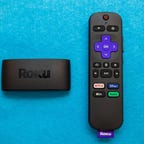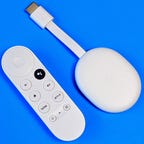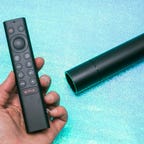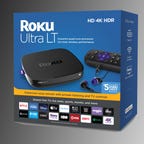Updated Jan. 20, 2024 10:45 a.m. PT
Written by
Eli Blumenthal
David Katzmaier
Ty Pendlebury
Sarah Lord
Our expert, award-winning staff selects the products we cover and rigorously researches and tests our top picks. If you buy through our links, we may get a commission.
Reviews ethics statement

Eli Blumenthal Senior Editor
Eli Blumenthal is a senior editor at CNET with a particular focus on covering the latest in the ever-changing worlds of telecom, streaming and sports. He previously worked as a technology reporter at USA Today.
Expertise 5G, mobile networks, wireless carriers, phones, tablets, streaming devices, streaming platforms, mobile and console gaming,

David Katzmaier Editorial Director — Personal Tech
David reviews TVs and leads the Personal Tech team at CNET, covering mobile, software, computing, streaming and home entertainment. We provide helpful, expert reviews, advice and videos on what gadget or service to buy and how to get the most out of it.
Expertise A 20-year CNET veteran, David has been reviewing TVs since the days of CRT, rear-projection and plasma. Prior to CNET he worked at Sound & Vision magazine and eTown.com. He is known to two people on Twitter as the Cormac McCarthy of consumer electronics. Credentials
Although still awaiting his Oscar for Best Picture Reviewer, David does hold certifications from the Imaging Science Foundation and the National Institutes of Standards and Technology on display calibration and evaluation. 
Ty Pendlebury is a journalism graduate of RMIT Melbourne, and has worked at CNET since 2006. He lives in New York City where he writes about streaming and home audio.
Expertise Ty has worked for radio, print, and online publications, and has been writing about home entertainment since 2004. He majored in Cinema Studies when studying at RMIT. He is an avid record collector and streaming music enthusiast. Credentials
Ty was nominated for Best New Journalist at the Australian IT Journalism awards, but he has only ever won one thing. As a youth, he was awarded a free session for the photography studio at a local supermarket. 
Sarah Lord covers TVs and home entertainment. Prior to joining CNET, Sarah served as the tech and electronic reviews fellow at Insider, where she wrote about everything from smart watches and wearables to tablets and e-readers. She began her career by writing laptop reviews as an intern and subsequent freelancer at Tom’s Hardware. She is also a professional actor with many credits in theater, film and television.
Expertise TVs, Home Entertainment, Streaming, Computers Credentials
Member of Screen Actors Guild and Actors Equity Association

Why You Can Trust CNET
Hands-on Product Reviewers
6,0007,0008,0009,00010,00011,00012,00013,00014,00015,000
Sq. Feet of Lab Space
$30 at Roku

Best wired streamer overall
Roku Express 4K Plus with Ethernet Adapter
View details
$50 at Walmart

Best wired streamer runner-up
Chromecast with Google TV plus Ethernet Adapter
View details
$140 at Walmart

Best wired streamer for gamers
Nvidia Shield TV
View details
$69 at Walmart

Cheapest Roku with built-in Ethernet
Roku Ultra LT
View details
When there are too many devices connected to your Wi-Fi network, there may be stuttering interruptions and buffering warnings whenever you try to stream something. Many times, your shows and movies simply won’t even load on your big screen. However, you can get around this by investing in a streaming device that can be directly connected to the internet via an Ethernet cable.
While many game consoles and smart TVs have built-in Ethernet ports, most of the best media streamers are Wi-Fi-only, although some work with a cheap adapter. We’ve spent hours testing streaming devices wired to the internet via Ethernet cable and here’s a list of our favorite options. Some of these devices have built-in Ethernet ports, while others work with Ethernet adapters. Note that all of the products below also work via Wi-Fi.
Best overall wired TV streaming device
The Roku Express 4K Plus is rated as our best overall streaming device and that continues to be the case here. The Express 4K Plus does not come with an Ethernet adapter when you purchase the device, but you can add one by picking up an adapter for $10 to $15 from Amazon.
It’s not the most elegant solution, but picking up a third-party adapter will save you a significant amount of money over a device that has an Ethernet port built-in. The setup is fairly straightforward — all you have to do is connect the adapter wire to the streaming device and then plug in the Ethernet into the adapter — and then you’re up and running.
Best wired TV streaming devices of 2024
The top spot on this list used to be occupied by Roku’s most expensive player, the Ultra, but the Express 4K Plus has replaced it. Roku is our favorite streaming system as it has all the major streaming apps, the simplest interface and a content-agnostic platform that doesn’t push any particular media-streaming provider, like Amazon Prime Video or Apple TV Plus, over another. The Express 4K Plus also streams in 4K HDR, though this Roku device lacks Dolby Vision.
Unlike the Ultra, the Express 4K Plus doesn’t have a built-in Ethernet port on its small dongle-sized body, but you can easily add one with a $10-to-$15 adapter from a retailer like Amazon (we tested it with a cable from a company called UGreen and it worked fine). This combo isn’t as elegant as a built-in adapter, but it would be around $50 cheaper than the $100 Ultra.
Note that the price below does not include the adapter.
Photo Gallery 1/1
Show expert take Show less
Google makes a cheap adapter that lets you connect a wired Ethernet cable to its Chromecast streamers, including the excellent new Chromecast with Google TV. The combo costs a total of $70 — $50 for the Chromecast and $20 for Google’s adapter. We like Roku’s system better than Google TV but it’s very close, and in some ways, particularly Google Assistant voice support, this media streaming device combo is a better choice than the Roku Ultra and a close second to the Express 4K Plus.
Note that the price below does not include the adapter.
Show expert take Show less
Although the Apple TV 4K costs more than twice as much as the options above, it’s the better choice for people who can appreciate its advantages. Those include compatibility with Dolby Vision HDR, flexible upconversion, superior voice command features, a better remote and a slick user interface. The Apple TV 4K is so good for media streaming, it even makes sense if you’re not an “Apple person.”
Show expert take Show less
Your Xbox or PlayStation has an Ethernet connection and plenty of streaming video apps, but the Shield is more versatile and includes a real remote control so you don’t have to navigate Netflix with your game controller. In addition to streaming in 4K and HDR with access to thousands of Android TV apps, it offers a robust library of games — from GeForce Now and Google Stadia cloud gaming, PC streaming including Steam Link to numerous native console-level and Android games — built-in Google Assistant complete with smart home control, NAS access, Plex server capability, HDHomeRun integration and more.
Show expert take Show less
This is technically the cheapest current device with Roku’s streaming system and an Ethernet port. The savings compared to the actual, non-LT Ultra isn’t much, however, and it lacks that device’s slick extras like Dolby Vision, programmable keys, fast app launching and the remote finder.
Show expert take Show less
Why should I use Ethernet to wire my streaming device?
If your streaming video gets choppy, it might be because your Wi-Fi isn’t strong enough. One way to fix this issue is to instead connect your smart TV or streaming device with Ethernet port access directly to your internet via a Cat 5 network cable. This will allow you to free up your wireless for other devices such as laptops and tablets. Ethernet is also more stable and usually faster than Wi-Fi, and it doesn’t have issues with walls, interference or distance (well, not in a house). This means you won’t encounter the same lag or signal interruptions using a streaming device or smart TV with Ethernet port availability, over a standard Wi-Fi streaming app or unwired device, alone.
The bad news is that you’ll need to run wires from your router to your TV for streaming, but if you’re stuck at home it makes a good weekend project, and Ethernet cable is cheap. During high-use times you might be OK running a temporary wire that you can remove later. If you can manage the project, your streaming woes could disappear.
Can I connect an Ethernet cable to any streaming device?
Unfortunately, no. Many streaming devices only come with Wi-Fi access. Some devices will allow you to connect to a third-party Ethernet adapter, but it won’t work with every device on the market.
A few devices, like the Apple TV 4K and the Roku Ultra come with an Ethernet connection built-in.
The good news is that every device on this list either has a built-in Ethernet connection or works with an adapter.
Can I still use Wi-Fi on my streaming device?
All of the devices on this list are capable of using Wi-Fi to stream content. If you move your TV or upgrade your home Wi-Fi, simply unplug the Ethernet cable from the device and set up your Wi-Fi connection through your streaming device’s settings menu. You can even go back and forth between Wi-Fi and Ethernet whenever you feel like — all you have to do is plug or unplug the Ethernet cable into your device.
>>> Read full article>>>
Copyright for syndicated content belongs to the linked Source : CNET – https://www.cnet.com/tech/home-entertainment/best-wired-streaming-device/#ftag=CAD590a51e































